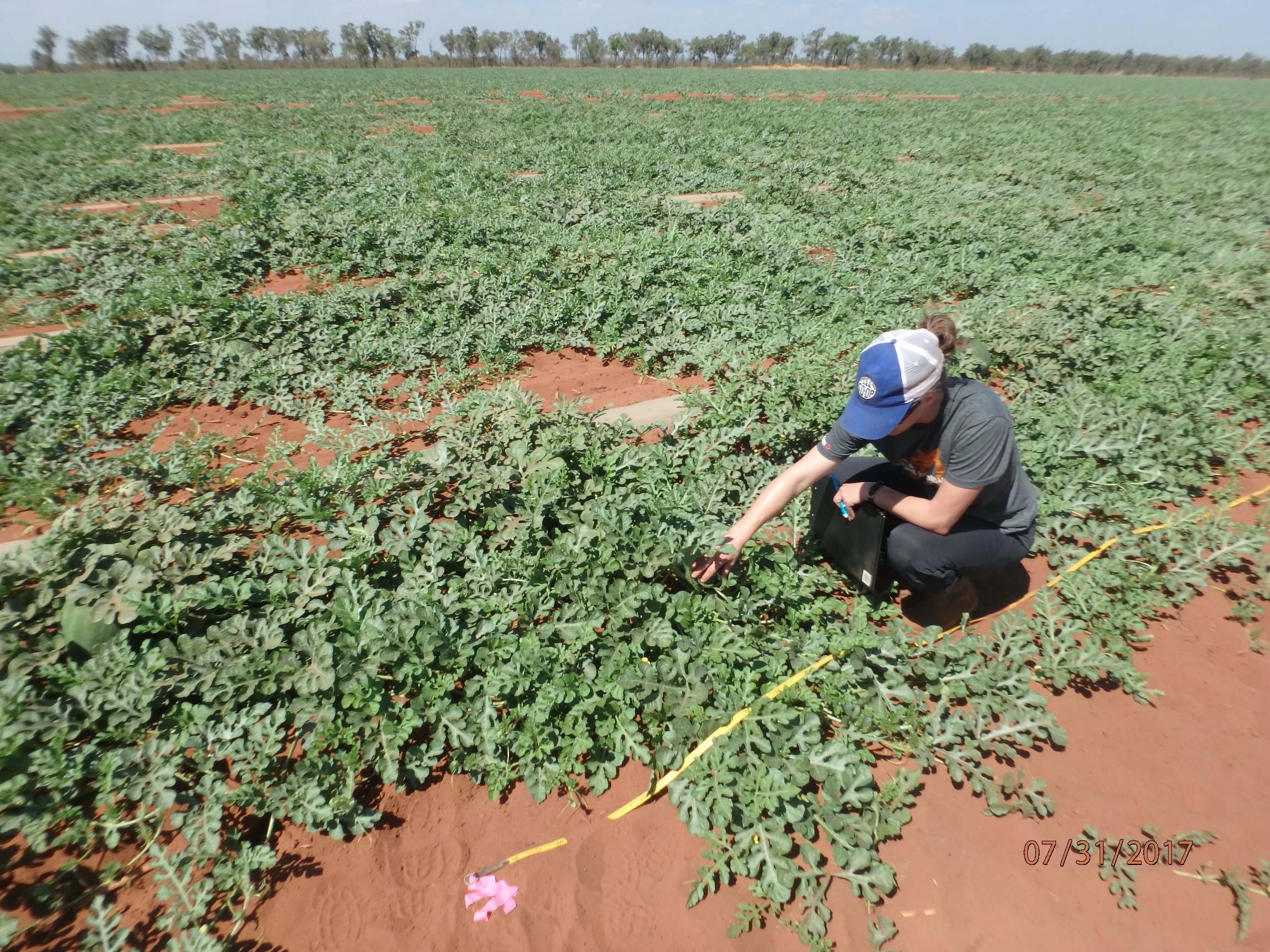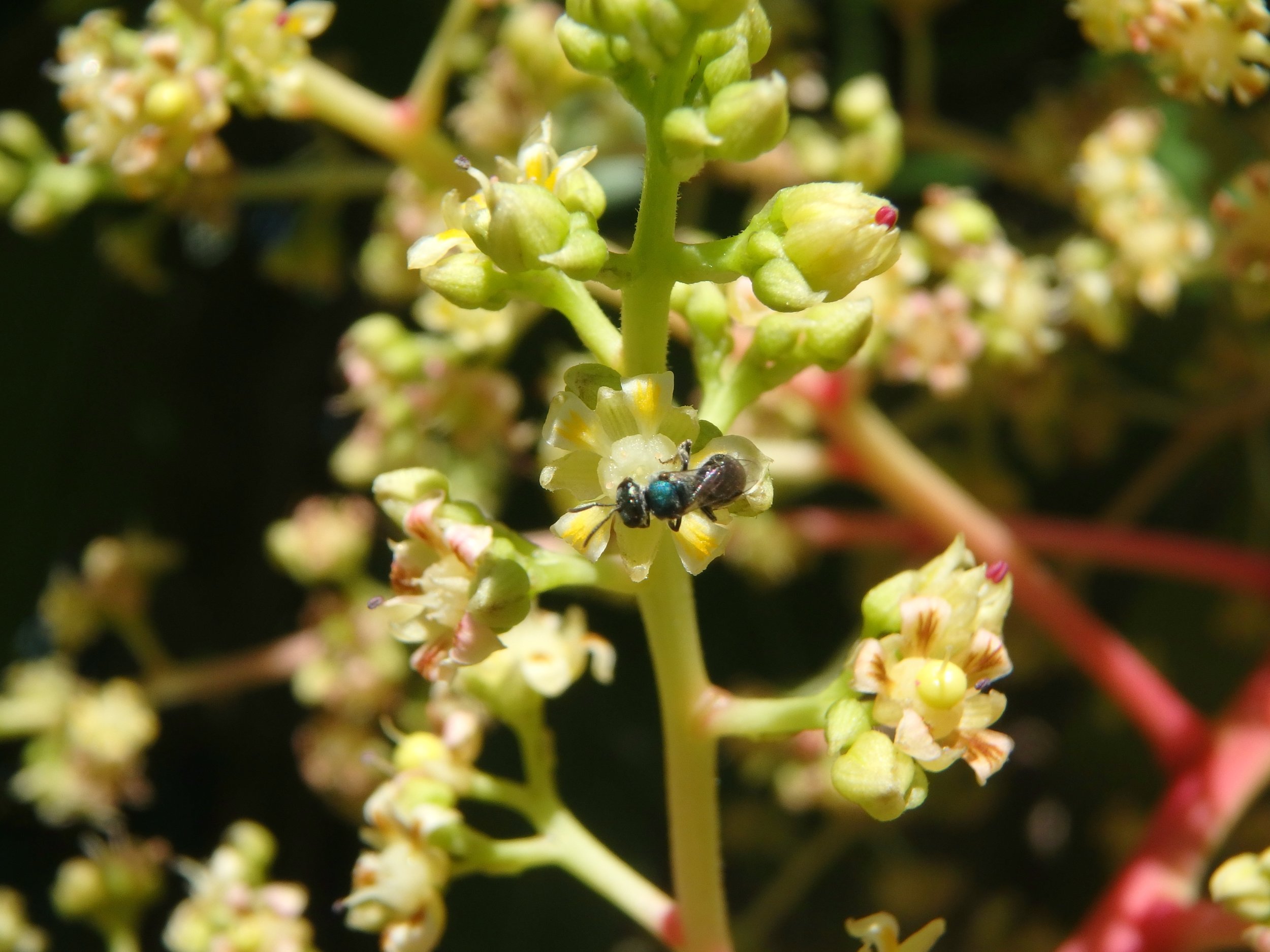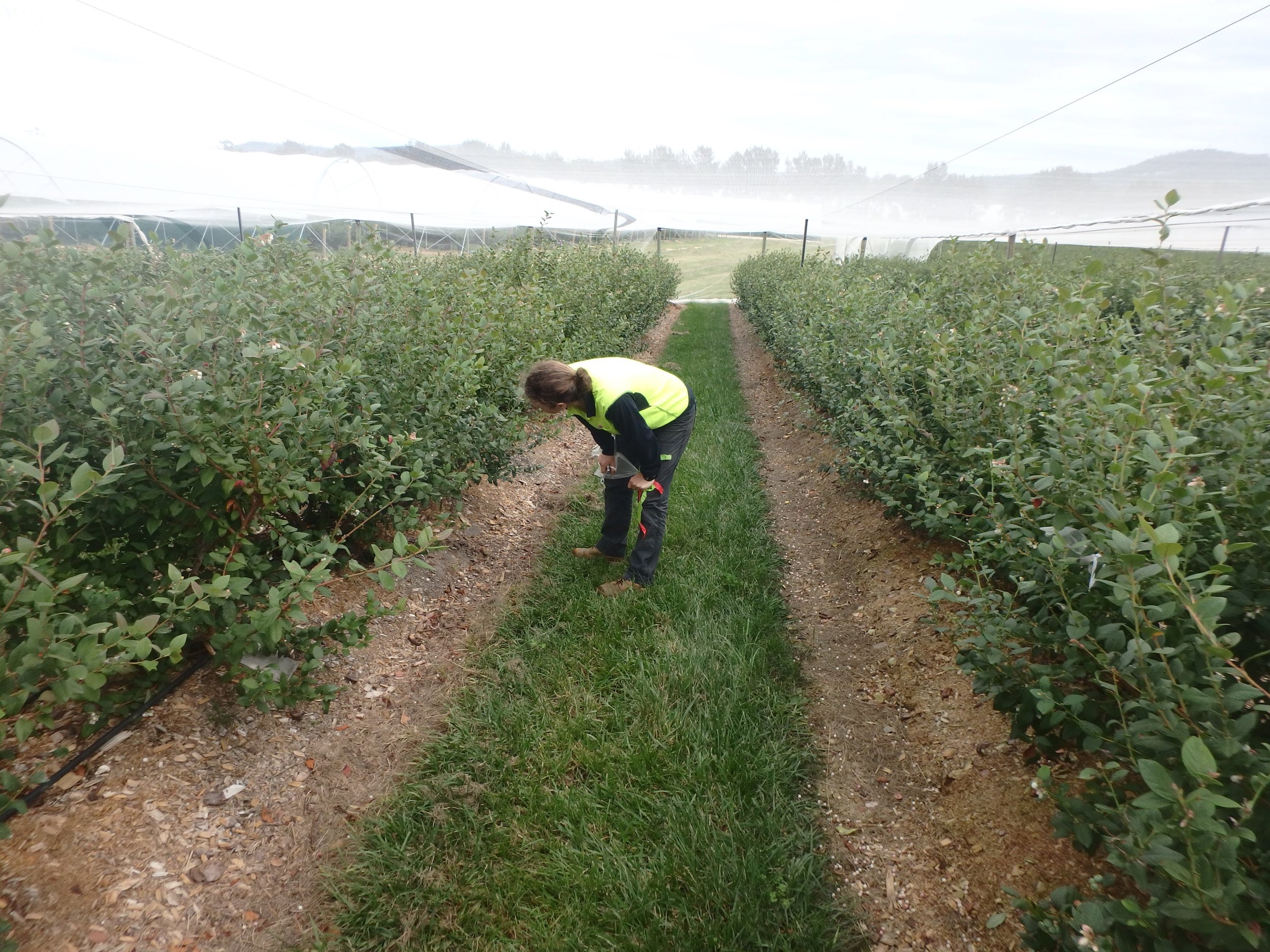Welcome to our new postdoc Mark Hall, who started with the Rader Lab this week! Mark and his family have just moved up from Melbourne, where he completed his PhD at Latrobe University on birds and bees in native vegetation remnants in agricultural landscapes.
PhD confirmation passed: Jose B. Lanuza
Congratulations to Jose for passing his PhD confirmation today! Jose will be using glasshouse experiments and desktop analysis to answer some interesting questions about how heterospecific pollen can influence fruit set. Jose is supervised by Romina and Ignasi Bartomeus at the Donana Biological Station in Seville, Spain. And 10 out of 10 for his awesome research timeline slide!
Watermelon pollinators
Access to watermelon farms has been very restricted in the Northern Territory with the recent mosaic virus scare. We are lucky to partner with some farmers around Katherine to study the insect community on their farms this year. We've seen native bees, flies, and of course honey bees on watermelon so far! Looking forward to studying this crop more in the coming years.
How does pollen move around mango orchards?
The team are currently in Australia's Northern Territory, where mangoes are flowering in the tropical winter, investigating this question (see previous posts here). Collecting insects is the key to answering it. After an insect is collected, pollen is scraped off the body using scalpels and tape. The collected pollen is mounted on a slide and the pollen sample is checked in the lab to see how much and what kinds of pollen are present. The pictures below show research assistants Jim and Jeff working in the lab. The magnified grains are mango pollen at 160x magnification!
First sightings of mango pollinators!
Some of our team are enjoying the tropical winter in northern Australia, all in the name of pollination ecology! Read our previous posts as the team arrived in Katherine NT and did some cool field science on mango stigmas. The latest update from Lindsey has some exciting news, including a video of a native Homalictus sp. bee pollinating a mango blossom!
From Lindsey: We are observing mango flowers to identify the visiting insect community. We've seen and collected at least 40 different insect species across 6 orders. We hope to create a reference collection for mango and to quantify the proportions of the different insect species to determine which are the most influential visitors in pollination.
New paper: pollinators visit wind-pollinated plants
Some wind-pollinated plants are an important pollen source for insect pollinators, but there is limited knowledge of how pollinator communities interact with wind-pollinated plants in their environment. Manu has just published a systematic review collating documented records of bees and hoverflies visiting wind-pollinated plants.
Saunders ME (2017) Insect pollinators collect pollen from wind-pollinated plants: implications for pollination ecology and sustainable agriculture. Insect Conservation & Diversity
A closer look at mango stigmas
Testing stigma receptivity in the field can be tricky, but it is important component of pollination ecology projects. To test mango stigma receptivity, we collect mango flowers and submerge their stigmas in hydrogen peroxide. If the stigmas are receptive, they will produce bubbles rapidly. As receptivity falls so does the rate of bubble creation.
New paper on pollinator community effectiveness
Bryony's new paper, co-authored with Romina, Margaret Mayfield (University of Queensland), Saul Cunningham (Australian National University) and Marcelo Aizen (Universidad Nacional del Comahue), is now online at Current Opinion in Insect Science. The paper presents a conceptual review of recent literature on pollinator effectiveness and identifies pros and cons of current methods. The paper argues for greater acknowledgement of the role plant-pollinator community interactions play in pollination effectiveness. The paper is open access.
Mango pollination road trip
Some of the Rader Lab team are in sunny Katherine in the Northern Territory for the mango flowering season! The team, including Lindsey, Amy and new honours student Brent, will be identifying mango pollinators and working out pollination efficiency for different insect species. The team then head off to North Queensland to do it all again. Stay tuned!
Drones for pollination research?
Amy recently attended a two day UAVair drone course at UNE SMART farm to learn how this technology can be applied to pollination ecology research. From this, the Rader lab are hoping to use drones to map and identify vegetation around orchards and farms in an effort to better understand the interaction between plants and pollinators within agroecosystems. Amy was surprised at how much training and certification is required before a drone can be used in the field, let alone the experience needed to accurately map useful data!
Bees and blueberries
Some of the Rader Lab team, led by PhD student Liam, are working in the blueberry growing region on the beautiful north coast of New South Wales coast as part of our fruit crop pollination project. The evergreen blueberry varieties here are in flower from April through to June/July. The main purpose of this field work is to establish a link between pollinator efficiency (floral visit number and composition - including species order) and fruit set and quality. We have also been assessing bee and hoverfly diversity in and around blueberry farms. So far we have found roughly 15-20 bee species in the vicinity of blueberry farms. Interestingly, these bees (including native blue-banded bees, teddy bear bees and leaf-cutter bees) have no interest in blueberry flowers – instead they love the flowering weeds (eg. farmer's friend Bidens pilosa)!
Horticulture industry connections
Bryony was in Adelaide earlier this week to present at HortConnections 2017 as part of the Precision Agriculture Research Group. The presentation team included two other PhD students (Surantha Salgadoe and Aaron Aeberli) and Research Fellow Jasmine Muir, and their presentation was titled "Emerging technology for managing Australian tree crops". The team are all part of the "Multi-Scale Monitoring Tools for Managing Australian Tree Crops- Industry meets Innovation" project being led by Assoc. Prof. Andrew Robson (UNE). Bryony spoke about her own PhD project and the work being done by other collaborators on the project.
Bryony has also just had a paper accepted in Current Opinion in Insect Science - stay tuned to find out when it's available online!
Bryony K. Willcox, Marcelo A. Aizen, Saul A. Cunningham, Margaret M. Mayfield, and Romina Rader (in press) Deconstructing pollinator community effectiveness. Current Opinion in Insect Science
Our honey bees have arrived!
We've just bought six nucleus hives from Calla Tessling and combined them to make four new honey bee colonies. We are building up each colony to use in our glasshouse pollination experiments in September. The hives made it safely to Armidale and are set up on UNE's SMART Farm. After a crash course in basic beekeeping from Bruce White a few weeks ago, our team, led by Carolyn, are making sure they stay safe over winter.
New publications!
Saunders ME (2017) Bees visiting unopened flowers: bumbling burglars or sneaky pollinators? Ecology, DOI: 10.1002/ecy.1838. (Also check out Manu's blog post on the paper here)
Lichtenberg EM, Kennedy CM, Kremen C, Batary P, Berendse F, Bommarco R, Bosque-Perez NA, Carvalheiro LG, Snyder WE, Williams NM, Winfree R, Klatt BK, Astrom S, Benjamin F, Brittain C, Chaplin-Kramer R, Clough Y, Danforth B, Diekotter T, Eigenbrode SD, Ekroos J, Elle E, Freitas BM, Fukuda Y, Gaines-Day HR, Grab H, Gratton C, Holzschuh A, Isaacs R, Isaia M, Jha S, Jonason D, Jones VP, Klein A-M, Krauss J, Letourneau DK, Macfadyen S, Mallinger RE, Martin EA, Martinez E, Memmott J, Morandin L, Neame L, Otieno M, Park MG, Pfiffner L, Pocock MJO, Ponce C, Potts SG, Poveda K, Ramos M, Rosenheim JA, Rundlof M, Sardinas H, Saunders ME, Schon NL, Sciligo AR, Sidhu CS, Steffan-Dewenter I, Tscharntke T, Vesely M, Weisser WW, Wilson JK, Crowder DW (2017) A global synthesis of the effects of diversified farming systems on arthroopd diversity within fields and across agricultural landscapes. Global Change Biology, DOI: 10.1111/gcb.13714.











































